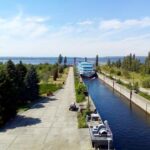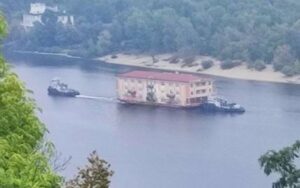Cabotage or sabotage: the history of the locks on the Dnipro
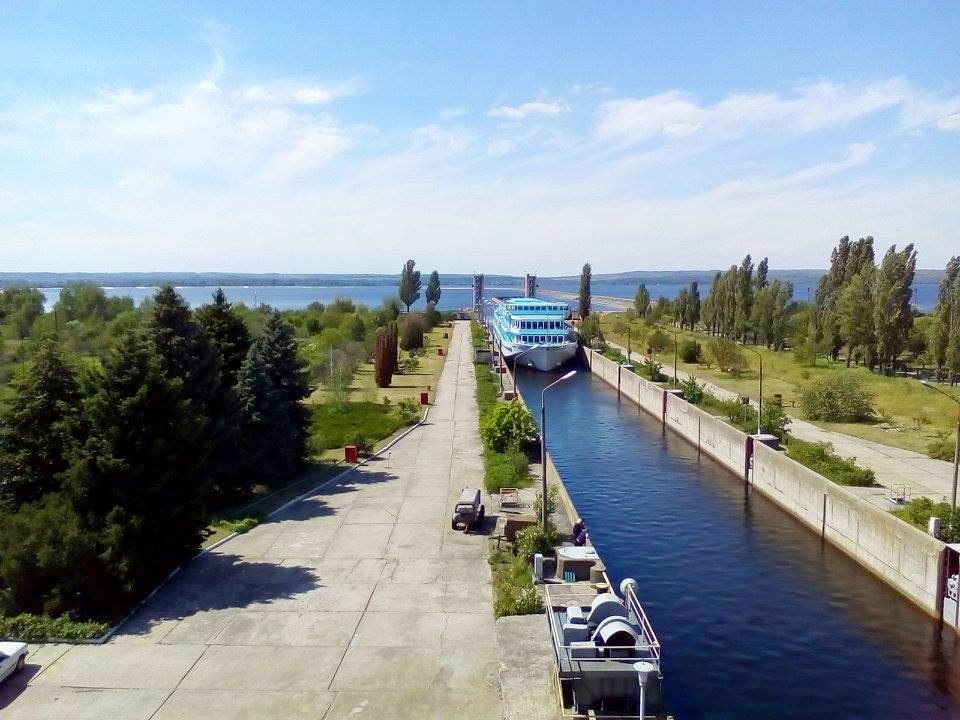
The grain harvest in 2021 will be almost the largest in the entire history of Ukraine’s independence. More grains was collected only in 2019.
And now Ukraine is furthering cooperation with former exporters of domestic grain and is actively looking for new ones. And news feeds are full of messages from seaports about the next shipment of a large consignment of grain for foreign partners. However, some cargoes have to overcome many trials on the way to customers. Many grain terminals are located along the Dnipro River and in order for the cargo to reach the seaport, it must first be transported by inland waterways. Here, one of the main tests for shippers and carriers are the locks of the Dnipro cascade.
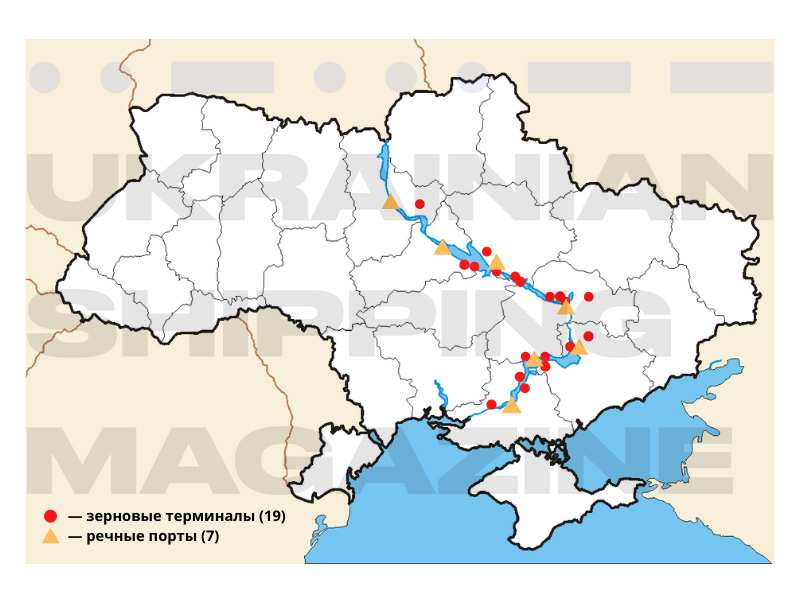
On the Dnipro, within the cascade of hydroelectric power stations, there are 7 river ports through which other types of cargo are transported: steel products, construction materials, etc. According to Olga Kopiyka, co-director for the development of river and maritime infrastructure of the European Business Association, the potential cargo traffic along the Dnipro is about 60 million tons. At the same time, last year only 11.2 million tons of cargo were transported along the river. Grain cargo accounted for 40% of transportations along the Dnipro, another 45% – building materials. Shipment of steel products accounted for about 5%. The volume of grain shipments along the Dnipro decreased by 30% compared to 2019 due to weather conditions.
It turns out that the potential of the main navigable river of Ukraine in terms of cargo transportation is realized by about 18.5%. To use the Dnipro as a transport corridor fully, you need:
- technically sound and safe locks for navigation;
- sufficient depth of navigable channels;
- fleet;
- regulated relationships between shipping companies and state-owned enterprises serving locks; an understandable system of payment for locking and financing of the maintenance of locks.
In 2016, the US Army Corps of Engineers, USACE, has conducted a technical survey of the locks on the Dnipro (five, out of six existing, except for Kanevsky) and stated the unsatisfactory condition of the facilities and the need for their urgent reconstruction. The full report of the American experts can be found here.

The American specialists invited by the Ministry of Infrastructure also stated that the cargo from the river had been transferred to railways and motor vehicles. At the same time, they clearly showed that two barges and one pusher tug, which transport 8,000 tons of grain along the river, are capable of replacing 100 railway wagons or 500 trucks.
The Americans, referring to the economic forecasts available to them, has stated that the volume of cargo transportation along the Dnipro could reach 40 million tons/year till 2025. But to rich this target, it is necessary to bring the locks into proper technical condition and introduce a program to manage these hydraulic structures in accordance with the needs of shipping. Experts recommended repairing the locks within a maximum of 2 years. Otherwise, they predicted, shipping on the Dnipro could stop in 2020.
This, as we can see, did not happen, but the situation with the locks has not changed.
In 2019, a number of representatives of public organizations of industrialists and entrepreneurs appealed to the President of Ukraine Volodymyr Zelenskyy about the locks.
“Industrialists and entrepreneurs who understand the technical condition of structures are very concerned about the Dnipro locks. Our data is confirmed by the research of American engineers, who in 2016 carried out a survey of the locks of the Dnipro cascade. They came to the conclusion that their condition is approaching critical, that there is a high risk of operational failure of structures and the closure of the navigation river system of the Dnipro River for an indefinite period,” said the Head of the Ukrainian Union of Industrialists and Entrepreneurs Anatoly Kinakh.
In March 2021, the Deputy Head of the State Enterprise “Ukrvodshlyakh” Olexandr Bannikov spoke about future plans regarding the maintenance of locks. He did not agree with the conclusions of foreign partners about the need for major overhaul of facilities: “We must move away from the strategy of “overhaul”and begin to modernize locks to a greater extent.”
“Our locks are pretty old. Accordingly, their repair is more and more difficult every year. If we want to achieve year-round navigation, we must find the resources and time for this process. Today the locks are in critical condition. We are opening the navigation season with the mark “negative conditions”, notifying people about possible difficulties,” Bannikov noted
We will write in a separate article about what the state is doing (or planning to do) to prevent a man-made disaster and preserve the locks (and with them the navigation on the Dnipro).
Below, the USM talks about the history of the locks and their current state.
What are the locks and why are they needed?
A navigational lock is a hydraulic structure, a “portal” for a vessel to move from one water body, or a pool (pool is a part of a river, canal, reservoir or other water body adjacent to a hydraulic structure – a lock) to another, with a different water level. For this, the lock chamber is specially filled with water or emptied, thus “levelling” the water level along the upper or lower pool. On the Dnipro, locks are needed so that vessels can overcome the dams of hydroelectric power plants.
An alternative way of transporting the vessel – the travel lift – requires less water and less time to pass than a lock, but the latter is much cheaper.
There are 6 shipping locks on the Dnipro, together with reservoirs. We offer our readers to virtually “go down” with the USM along the river, and go through all the locks of the Dnipro cascade, starting from the top one. Let’s tell you why they are needed.
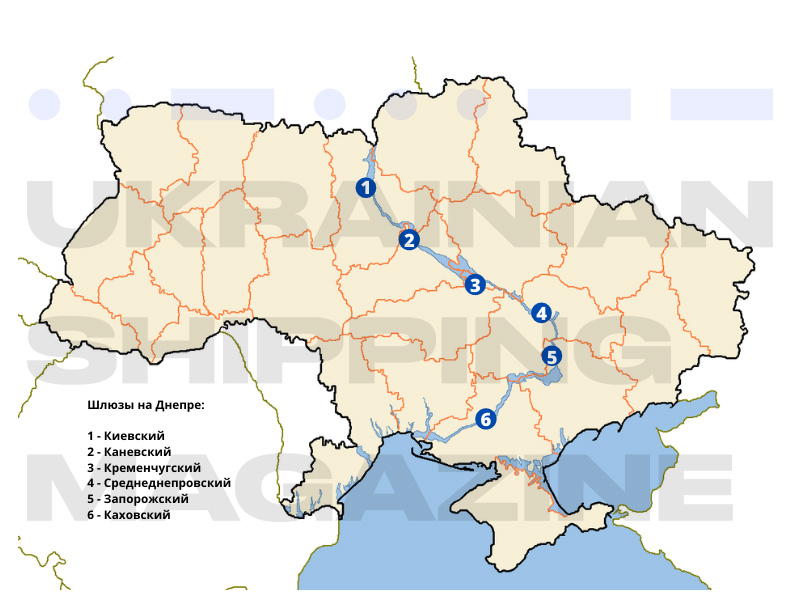
Kyiv lock (50 years old)

Kyiv shipping lock – near the dam, single-chamber, designed for the passage of vessels, located on the right bank of the Dnipro River, with the extension of the navigation chamber into the upper pool. The locks was designed at the Kharkov branch of the Institute “Gidroproekt” named after S.Ya. Zhuk and built on the trust “Kremenchug GES stroy”. The construction of the lock began in 1961, and the facility was put into permanent operation on June 4th, 1971. The lock is a part of the Kyiv hydroelectric complex. Not designed for flood passage.
Technical characteristics: length of the navigation chamber – 150 m, width – 18 m. The guaranteed depth of passage through the lock is 3.65 m. The design number of locks per day is 36.
The main technological equipment of the lock includes:
- working double-leaf and repair double-leaf gates on the lower head of the lock;
- emergency working lifting and lowering gates and two-leaf repair gates on the upper head of the lock;
- gates of water supply galleries for emptying the shipping chamber;
- hydraulic power drives of technological metal structures;
- navigation device systems;
- remote automatic process control system from the central control panel, etc.
A transport bridge is located on the lower head of the lock.
The cost of repairing the lock in 2016 was estimated by American experts at 890 thousand – $1.8 million.
Kanevsky lock (49 years old)
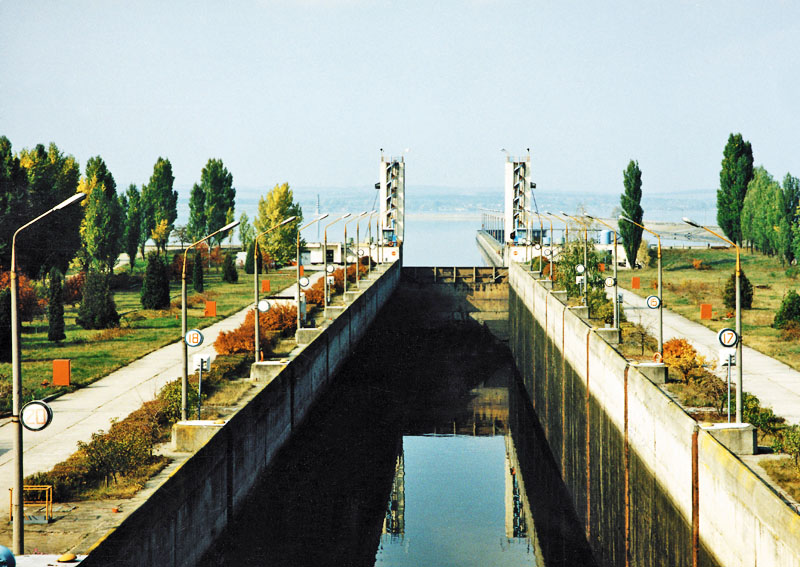
Kanevsky shipping lock was developed in the Ukrainian department of the Institute. S.Ya. Zhuk with the participation of SDB “Zaporozhgidroproekt”, SDB “Lengidroproekt” and the Institute “Ukrgidrorechtrans”. The lock was put into operation on July 22th, 1972 – then the motor vessel “T. G. Shevchenko ” locked through it.
Technical characteristics: chamber length – 270 m, width – 18 m, design head – 12.75 m. The upper head of the lock is equipped with emergency flat and working lifting and lowering gates. On the lower head of the airlock there are double-leaf and repair gates, as well as gates. Since the beginning of operation, more than 200 thousand locks have been carried out in the lock. The design number of vessels that have been flooded per month is 34.
Kremenchug lock (62 years old)

The construction of the Kremenchug lock began in September 1955. The first lock was carried out in September 1959, and at the same time the temporary operation of the lock began. The facility was commissioned for permanent operation in May 1964. The design number of locks is 36 per month; in 2010 the average number of locks reached 63 vessels per month.
By the type of structure, the lock is near-dam, single-line and single-chamber. The length of the navigation chamber is 260 m, the width is 18 m. The diving boat “Malakhit” is based on the lock, which conducts diving surveys of hydraulic facilities in balance of the State Enterprise “Ukrvodshlyakh”, as well as a crane with a lifting capacity of 40 tons – it is used during repair work at the enterprise’s locks.
The cost of repairs for 2016 was $ 1.375 – $ 2.23 million.
Serednedniprovsky lock (58 years old)
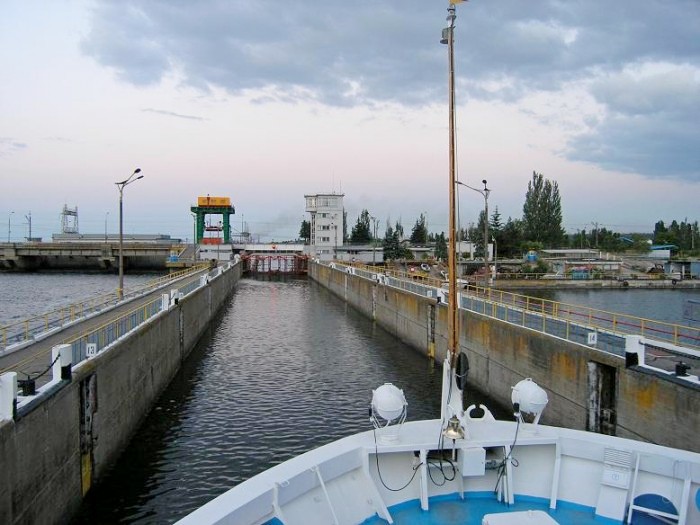
The project of the Dneprodzerzhinsky shipping lock was developed in the Ukrainian branch of “Gidroproekt” named after S.Ya. Zhuk in Kharkov. In 1956, the construction department “Dneprostroy” began work on the construction of the lock. The facility was commissioned on April 6th, 1963. For 57 years, more than 500 thousand vessels have passed through the lock. The facility can withstand a water pressure of 12.6 m of the Dneprodzerzhinsky reservoir.
The longest navigation through the Srednedneprovsky lock was in 1982, and lasted 353 days.
The Dneprodzerzhinsk single-chamber lock serves to overcome the concentrated drop in water levels in the alignment of the Dneprodzerzhinsk HPP dam. The structure of the lock’s shipping facilities includes:
- two dams – breakwaters (straight and curved);
- upstream pier, moorings (rectilinear on the left side and curved – on the right);
- shipping lock, consisting of upper and lower heads and lock chamber;
- downstream pier, moorings (straight on the left and curved on the right).
In the inter-navigation period in 2009-2010 the overhaul of the lockwas was carried out, with the replacement of the emergency working lifting and lowering gates of its upper head.
The cost of repairs for 2016 was $ 1.89 – $ 3 million.
Zaporizhzhskyy lock (41 years old)

In 1927, in Zaporozhye, simultaneously with Dneproges, they began to build a three-chamber shipping lock, which was put into permanent operation in 1934. For the first time the vessel “Sofia Perovskaya” was locked at the facility. However, during the Second World War, in 1941, the Dneproges dam was blown up by order of the General Staff of Soviet Army. After the war, Dneproges and the lock were restored within three years.
With the development of shipping, the need for a new lock arose. It was designed by Gidroproekt in Kharkov. The object was built by “Dneprostroy” of the USSR Ministry of Energy and Electrification. The construction of the lock began in 1971 and was put into operation in 1980. Technical characteristics: length – 283 m, width – 18 m. The minimum depth at the sill at the minimum navigation level is 6.9 m, the maximum design head is 39.2 m. The design number of locks per day is 36.
By 1993, the old lock (which worked simultaneously with the new one) was finally closed: its dimensions turned out to be small for the passage of vessels.
The cost of repairing the existing lock as of 2016 is 3,054 – 6 million dollars.
Kakhovsky lock (66 years old)
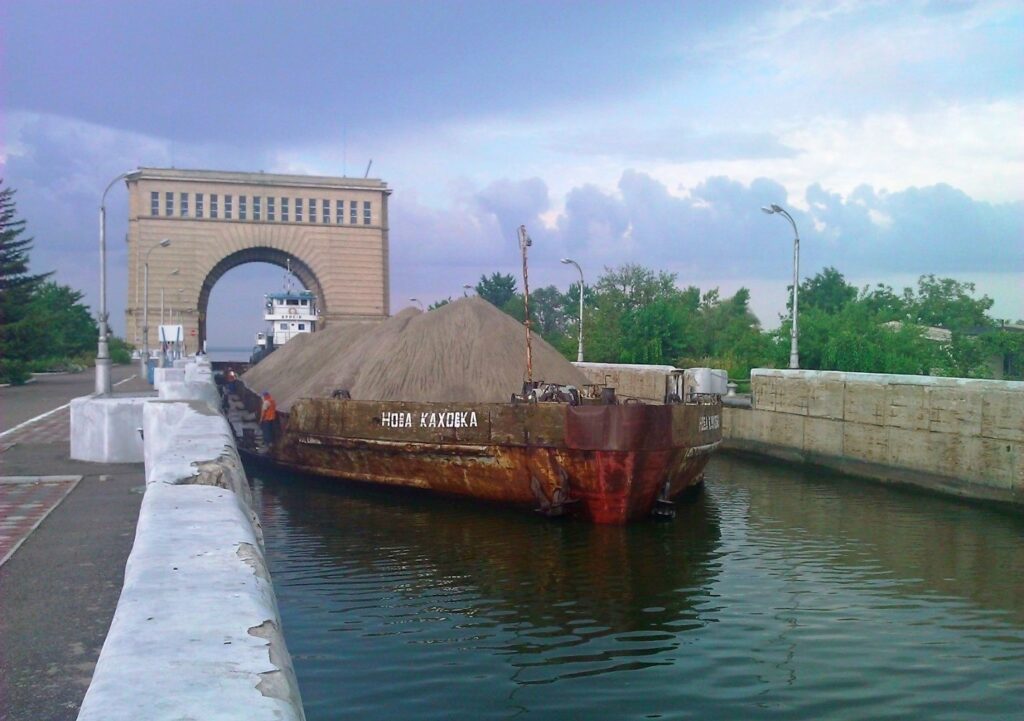
The lock is part of the complex of structures of the pressure front of the Kakhovsky hydroelectric complex and is the lower stage of the Dnipro cascade. Built between 1951 and 1955. The facility was put into temporary operation on June 30th, 1955, and permanently on April 15th, 1958.
The length of the navigation chamber is 260 m, the width is 18 m. The structure of the navigable structures of the Kakhovsky lock includes a single-chamber single-line lock, as well as upstream and downstream approaches.
Shipping facilities are located in the left-bank floodplain of the Dnipro River. The head at the structure is 16 m. The design number of locks is 32, the average daily is 7, the maximum is 12 per day.
The cost of repairs as of 2016 is $ 1.53 – $ 3.2 million.
